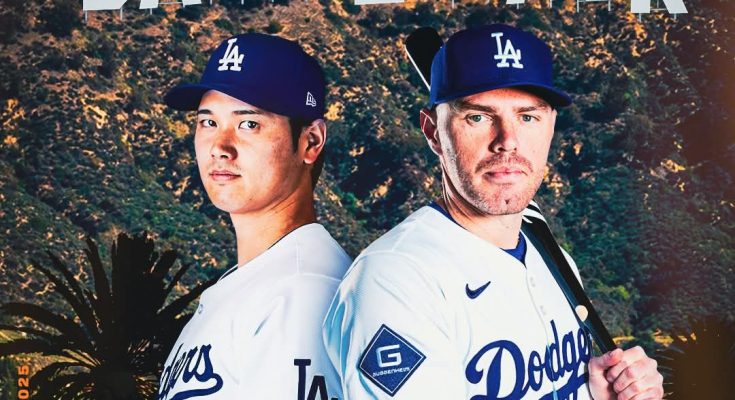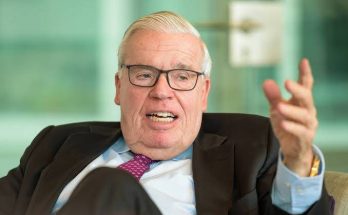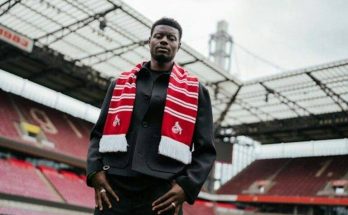The Los Angeles Dodgers are headed back to the Fall Classic, and the baseball world is buzzing. For Dodgers fans, this moment feels both thrilling and validating. For the organization, it’s a testament to sustained excellence, resilience, and the kind of elite-level consistency rarely seen in modern professional sports. The Dodgers, already the reigning champions after their triumph in the previous season, have now accomplished what no other team has managed to do since the 2009 Philadelphia Phillies: return to the World Series the very next year after winning it all.
This is no small feat. Baseball is a game of attrition. The 162-game regular season is a marathon, and the postseason is an unforgiving gauntlet. Repeating as champions is widely considered one of the most difficult achievements in professional sports. Not only are teams playing a longer schedule than almost any other league, but they are also constantly facing roster turnover, injuries, fatigue, slumps, and the reality that every other team is studying them, gunning for them, and measuring themselves against them. When you’re the defending champions, everyone wants to beat you.
Yet here the Dodgers are again, punching their ticket to the World Series with the kind of poise, depth, and raw talent that has come to define their recent era of dominance. Since Andrew Friedman took over the front office in 2014, the Dodgers have built one of the most analytically savvy and forward-thinking organizations in baseball. But beyond the spreadsheets and data sets is a clubhouse filled with leaders, competitors, and stars—players who know what it takes to win and are willing to do the dirty work required to get there.
This postseason run has been especially revealing. The Dodgers didn’t cruise into the World Series—they battled. Along the way, they faced elite pitching, explosive offenses, and moments of adversity that would’ve cracked a lesser team. There were games where the bats went cold, and innings where the bullpen looked vulnerable. There were high-pressure at-bats, close calls, and stretches where it seemed like the reigning champs might be knocked off early. But just like last year, they found ways to win.
The core of the team remains formidable. Mookie Betts continues to be the spark plug, leading by example with his defense, clutch hitting, and unmatched baseball IQ. Freddie Freeman brings calm and consistency to the lineup, delivering veteran at-bats in crucial moments. Will Smith has emerged as one of the game’s top catchers, balancing the responsibilities of handling a pitching staff with the ability to hit for both power and average. And then there’s the rest of the lineup—players like Max Muncy, Gavin Lux, James Outman, and others who each bring unique tools to the table.
Perhaps the most impressive aspect of the Dodgers’ run, though, has been their pitching. Even with some injuries to key arms and changes from last season’s staff, the Dodgers have leaned into their depth and come up with answers. Clayton Kershaw, the future Hall of Famer and long-time face of the franchise, continues to defy time. Though no longer the flamethrowing ace of a decade ago, he remains effective and mentally sharp, mixing his pitches and locating with surgical precision. Young arms like Bobby Miller and Emmet Sheehan have stepped up in critical spots, showing not just talent but maturity beyond their years.
In the bullpen, the Dodgers have crafted a mix-and-match strategy that maximizes matchups and minimizes risk. Brusdar Graterol, Evan Phillips, and Ryan Brasier have all taken on big roles, each offering something different—be it velocity, movement, or control. The front office’s ability to build a pitching staff that adapts and evolves over the course of a long season has been key to surviving the relentless grind of the playoffs.
But to truly appreciate the magnitude of the Dodgers’ return to the World Series, one must look at the historical context. In today’s game, dynasties are incredibly rare. The parity in Major League Baseball—fueled by revenue sharing, luxury tax penalties, and smarter front offices across the league—makes it extremely difficult for any one team to dominate for long. Even teams with large payrolls and top-tier talent often find themselves falling short due to the sheer unpredictability of October baseball. Injuries, slumps, a bad call, or a single swing can end a season. The fact that the Dodgers have not only made it back but done so as defending champions underscores their excellence.
The last team to pull off this kind of feat was the 2009 Phillies, who returned to the World Series after winning it in 2008. Since then, even the best of the best have struggled to repeat. The 2016 Cubs, the 2017 Astros, the 2018 Red Sox, the 2019 Nationals—all excellent teams with deep rosters, all unable to make it back the following year. The Dodgers have now broken that streak and rewritten the narrative. They are not just built to win one championship—they are built to contend every single year.
There’s also a psychological element at play here. The weight of expectations can crush a team. Every night, the Dodgers are expected to win. Every postseason, they’re expected to go deep. And when you’re the reigning champs, the pressure only intensifies. Every mistake is magnified. Every loss feels like a referendum on your ability to defend your title. That the Dodgers have carried this burden all season, through the ups and downs, and emerged back at the top says a great deal about their mental toughness.
This return to the Fall Classic is also significant for manager Dave Roberts. Often scrutinized, sometimes unfairly, Roberts has now guided his team to multiple World Series appearances. His calm demeanor, loyalty to his players, and ability to manage egos and expectations have all played a vital role in the Dodgers’ success. While in-game decisions can be second-guessed, as they are for every manager, Roberts’ overall impact on the clubhouse culture and his ability to keep the team focused can’t be overstated.
And then there’s the fans—the heartbeat of this franchise. Dodger Stadium has been rocking all season, a sea of blue and white echoing with chants, cheers, and the unshakable hope that this team could do it again. After decades of near-misses and heartbreak, the fanbase is finally experiencing a golden era, and they’ve shown up in full force. From opening day to the final out of the NLCS, they’ve packed the stadium and poured their passion into every pitch.
This World Series appearance carries with it the hopes of repeating, of cementing a legacy, of proving that the Dodgers are not just a great team—they are a historically great team. A second consecutive championship would elevate them to a level reached by only a handful of franchises in baseball history. The Yankees did it in the late ’90s. The Blue Jays did it in the early ’90s. The Big Red Machine did it in the ’70s. Now, the Dodgers have a chance to join that elite company.
But beyond the quest for a repeat, this moment is also about redemption. While last year’s championship was sweet, it came with critics pointing to a shortened season or other extenuating circumstances. This year’s run removes all doubt. It reaffirms the legitimacy of the organization’s vision and execution. It silences those who claimed the Dodgers couldn’t win a full-season title or that their 2020 title deserved an asterisk. This is the full-season, grind-it-out, face-every-contender version of October baseball—and the Dodgers are once again among the last teams standing.
Looking ahead, the World Series matchup promises to be electric. Whoever their opponent is, they’ll be facing a team that has also battled through a brutal postseason field. But the Dodgers won’t be intimidated. They’ve been here before. They know the stakes. They know the pain of losing on the biggest stage, and they know the euphoria of winning it all. That experience is invaluable.
Baseball, in its purest form, is about timing. The hot team at the right time can win it all, and talent doesn’t always guarantee success. But this Dodgers team has both timing and talent. They have stars in their prime. They have youth stepping up. They have a fan base behind them. And now, they have a shot at back-to-back glory.
As the Dodgers head back to the Fall Classic, they carry with them more than just the weight of their own expectations. They carry the legacy of a franchise that has long stood for excellence. They carry the dreams of a city that bleeds Dodger blue. And they carry the momentum of a team that knows exactly what it takes to win it all.
They’ve done it before. Now they’re back to do it again.



